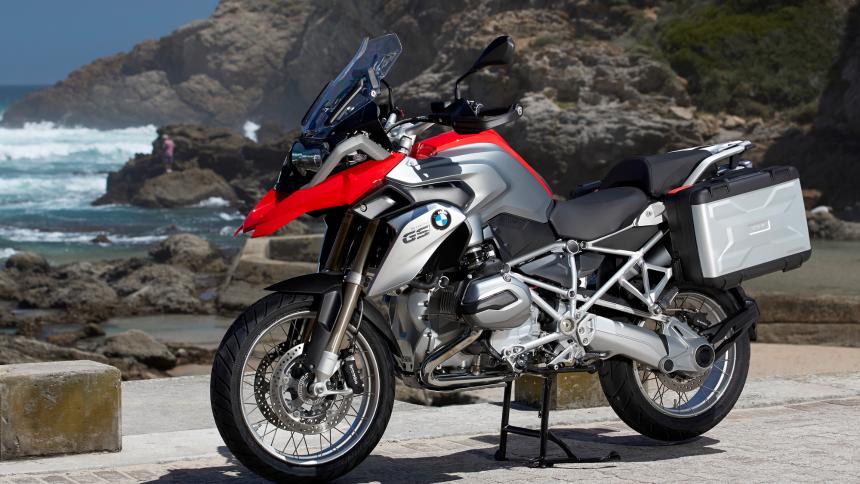BMW Motorrad advertises its bestseller GS with absolute reliability. Now, the last five years of travel enduro have to go to the workshops – because of a dangerous and, above all, well-known design flaw.
Off to the workshop: All BMW R 1200s from the years 2013-2017
Tuesday, 04.07.2017
11:43 clock
The trouble started at the end of April in a Facebook group and picked up speed: reports that the top models of the BMW off-road fleet, the R 1200 GS and R 1200 GS Adventure motorcycles, loosened the fork tubes in hard terrain and partly broke away, made the rounds. Corresponding reports of accidents and dramatic images from Australia and especially South Africa followed. A website (“Lives are at risk!”) called for a petition.
A few days before the annual blue-white motorcycle family convention, the BMW Days in Garmisch, the roaring of social networks had become too loud. In the face of massive image damage, BMW Motorrad decided to call back. Officially, the manufacturer uses the term “service date”, but the urgency in which it is formulated leaves no doubt: Since the end of June, BMW has been calling for the owners of 168,000 GS models built between 2013 and 2017 to be the fastest in the world to this “service appointment”.
It has turned out, according to BMW in a statement, in “ongoing field tests” that “overcoming an obstacle, during a fall or driving through a deep pothole” with undue speed “stress”, the GS front suspension in individual cases could not cope. It could lead to fork oil loss, crackling noises, control problems and in extreme cases to the loss of Vorderradfederungs connection.
The problem is well known
The phrase that driving through a pothole produces too much stress is a PR disaster for BMW. After all, the Bayern sell the GS models as the crowning achievement of the big off-roaders and market them as “unstoppable”. For the driver, it is more than a PR-GAU, the error is dangerous: In a workshop should therefore be checked as soon as possible, whether the tamping of the Telelever front wheel guide would have solved with the fork tubes.
BMW spokesman Gerhard Lindner said: “If there is only a small amount of damage, both uprights will be retrofitted with an additional standpipe bushing, and if the damage is too great, the uprights will be replaced by correspondingly modified new parts.”
Why new parts, however, are only now installed remains BMW’s secret: Already in 2013 at the market launch of the new water-cooled R 1200 GS problems with loose inserts of the fork stand pipes had surfaced. Even before the machines were handed over to the customer, the workshops had been instructed to caulk the connection with a special puncture tool. With that, the problem seemed off the table; since then, the coarse caulking, which is hidden under a rubber cuff, already done ex works.
Also Ducatis could buckle
But obviously, the original design weakness is now becoming a serious problem again. The then patent solution for a small number of first deliveries was technically not sufficient: In the US, where stricter regulations apply, 2013 was already an official recall – that is a factual driving ban for insurance reasons – proclaimed for just 15 machines. Now, four years later, it is time to make 168,000 BMW vehicles safe in the world.
BMW is not alone. A similar constructive problem had to announce the competitor Ducati a few weeks ago: The Multistrada Enduro, the first serious candidate of the Italians in the large-enduro off-road segment, threatened to break the lower mounting eye of the shock absorber on the rear swing arm in “heavy terrain use.
Ducati took the danger so seriously that in the US, an official recall of the National Highway Traffic Safety Administration (NHTSA) was pronounced. The consolation of the Italians: In the US, only the previously sold 568 machines had to be converted.

